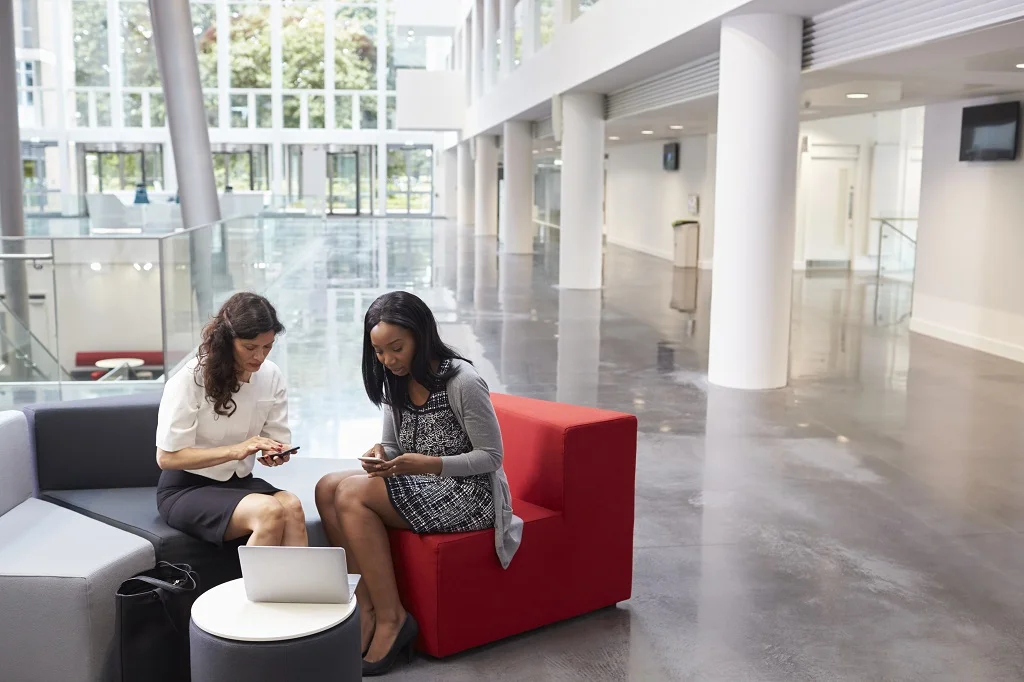With over five million apps available across the world, just about every fathomable function of daily life can be aided by a finger-tap on a smartphone.
Humans spend at least two hours a day in apps. But so far this U$1.3 trillion market has barely serviced the place people spend most of their waking hours: the workplace.
That’s starting to change. Workplace apps are increasingly being used for tasks like booking meeting rooms, ordering a morning coffee for collection upon arrival at work, or signing up for extracurricular activities like running clubs. The promise is increased productivity and better engagement with the company.
“As our professional and personal lives increasingly blend, there is a growing appetite for apps to communicate with us in the workplace,” says Michael Taggart, Head of Digital Solutions in Australia for JLL.
When apps gain traction, the results are clear. For instance, when Capital One, a global financial services company, rebranded its real estate organization –changing the name to Workplace Solutions from Corporate Real Estate—it introduced an employee facing app that helped its associates find office and branch locations, access location amenities like conferencing centres, dining locations, fitness and transportation services, and provided a direct line back to the real estate organization for facilities support.
There is a risk though that apps sit unused, an all-too-common result. Around 23 percent of people will abandon an app after a single use if it doesn’t meet their liking, even if there’s a chance the updates will.
“You have to be solving a problem that already exists, not trying to solve ones that don’t,” says Taggart. “There’s no need to overcomplicate things. Apps like Uber, and some airline apps, just serve the most basic functions, such as booking a taxi, or booking a flight.
“Apps can address many superficial concerns of comfort and convenience, but with attention spans getting shorter, the likelihood of mass adoption will be slim.”
Mitigating risks
In these early days of adoption, the enthusiasm of companies to iron out their tangle of tech platforms isn’t matched by the rate of success. In fact, 84 percent of digital transformation efforts in the workplace will fail, according to Forbes.
On the app front, there are multiple reasons for this, including businesses rolling the platform out too quickly and with too little consultation with staff, says Stewart Elliot, chief executive of app developer, Modo Labs. Employees can feel overwhelmed with too much technology.
“The best way to achieve mass adoption is to introduce an app that solves key pain points, and then scale up from there,” he says. “Apps can fail to get traction when this approach is ignored, or when it occurs to a business that they have opted for a product with significant long-term costs, that is a continuous drain on IT resources, or it simply takes too much time to develop, deliver and maintain.”
A workplace app can solve the real day-to-day pain points of office workers, as well as help remote workers feel connected to HQ through personalized content and notifications.
Digital success in real life
Capital One is an early adopter of the workplace app. It branded its app @Work and uses it to simplify and streamline the points of entry into the web of applications that Workplace Solutions uses to design, deliver, manage, and maintain the Capital One real estate portfolio. In many instances, it hasn’t replaced those critical systems, but acts as a complement and gateway for the most important elements of those functions for their associates.
The app has now been rolled out in 125 office locations, says Samantha Fisher, the company’s Senior Director of Workplace Experience.
“We wanted one solution to show that we understood our colleagues’ challenges, and we knew that it needed to be intuitive and function just as any consumer app does today.”
Fisher adds that the app has helped Capital One integrate the physical and virtual components of commercial real estate and will continue to drive the evolution of workplace to a service oriented ,digital hospitality solution set.
“It has been a game changer for us. We were really dedicated to ensuring it delivered value, knowing that it was the key to take up and I’m so glad we stuck with it to get it right before rollout.”
Convenience at a touch
Successfully venturing into new digital waters at first go is not easy to pull off. But with careful planning, employees can enjoy the convenience locating an available desk before they’ve walked through the door.
It’s not just a benefit for employees. Apps can notify users of a happy hour offer from a café in the building, enabling a landlord to provide value-add service to both a retail and an office tenant. Business owners and landlords are also able to send push notifications to targeted groups. These could be emergency notifications, or a memo that a meeting room is out of use.
“Mobile devices are constantly delivering extraordinary conveniences, and now they are putting the workplace into our pockets, serving up value and insight to everyone along the chain – landlords, employers, businesses and people. It’s exciting to think about the possibilities still relatively unexplored,” says Taggart.

